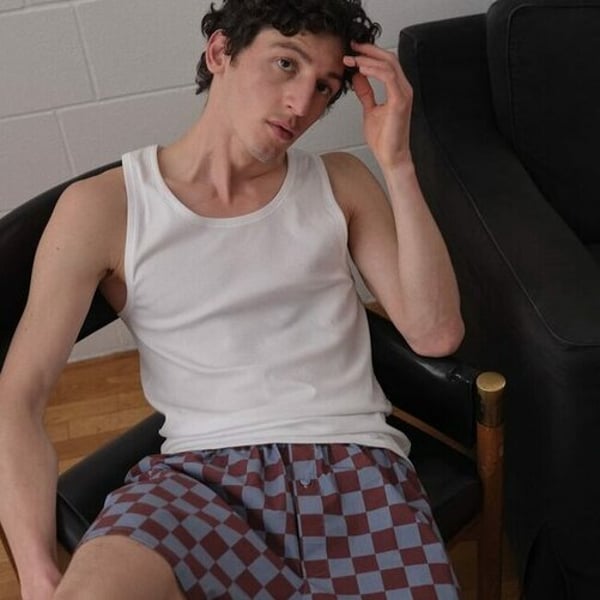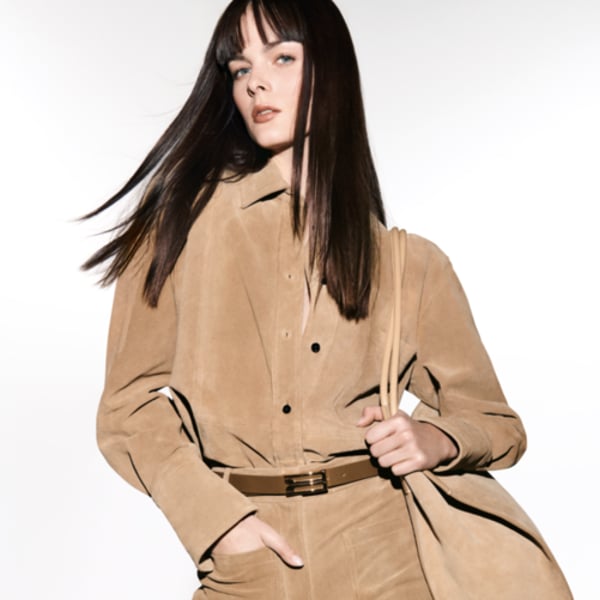Translated by
Nazia BIBI KEENOO
Published
October 3, 2025
For 141 years, Hanro has been dedicated to crafting high-quality lingerie, nightwear and loungewear. Founded in 1884 in the Swiss town of Liestal, in the canton of Basel-Landschaft (Basel-Land), by Albert Handschin and Carl Ronus — whose surnames gave the brand its name — the company is now based in Götzis, Vorarlberg, Austria, and is led by CEO Stephan Höhmann. From the outset, the company has been synonymous with luxury, exceptional quality and timeless style. Today, Hanro is expanding into the broader fashion sphere, opening a new chapter in its history with the Atelier platform, created to foster collaborations with designers, artists, and visionaries who share Hanro’s founding values. The Atelier launches with a capsule collection created in collaboration with internationally renowned Austrian designer Arthur Arbesser.

“We wanted to demonstrate our expertise and our ability to work closely with artists or designers,” Stephan Höhmann told FashionNetwork.com at the presentation of the initiative during Milan Fashion Week. “We decided to collaborate with Arthur primarily because we have common roots. He is Austrian, as we are now too, and you can sense an Austrian — particularly Viennese — spirit in his design.
“It was fascinating to work with a designer who, on the one hand, loves and understands how to work with the material and, on the other, has a fabric-focused design vision similar to ours. We therefore felt that we had to create something new, which our customers were also requesting. In addition, we admit, we aim to reach a new audience as a brand, because you should always find another reason to talk about yourself, broaden your horizons and thereby find new opportunities and customers.”
The central element of the collection — comprising 15 pieces — is a chequerboard motif designed by Arbesser, a Viennese designer now permanently based in Milan, where he has just opened his new sartorial and creative showroom/atelier on Via Sannio. Conceived as a symbol of balance between order and creativity, structure and lightness — a metaphor for a shared vision of design — the unisex capsule fuses comfort and style in timeless garments.
“It was very easy to work with Arthur because he immediately understood our materials and fell in love with them,” the CEO continued. “He greatly appreciated our uncompromising approach, the many tests we carried out on the prints before achieving an optimal result. At the same time, Arbesser did not simply default to Hanro’s style.”
The capsule collection is available at a selection of Hanro boutiques, including Munich, Vienna, Zurich, Rome, New York, and Beverly Hills, as well as on the brand’s official e-commerce site.

Meanwhile, Hanro closed the 2024 financial year “with turnover even better than in 2023, when we equalled our record level of 2019,” Höhmann confirmed, “and in 2025 we should surpass it again, albeit slightly, probably by about 1.5%. This year went very well up to August; we will see how our key markets perform as the year draws to a close.”
Hanro’s primary market is the United States, the second is Germany, the third is Switzerland; then come the United Kingdom, France, Italy and Austria, and also the Middle East, where it has what the CEO describes as “our best store ever in Dubai,” followed by Isetan in Tokyo. Hanro also has a presence in Australia.
“In addition,” the CEO continued, “the most recent store we opened is a single-brand Hanro boutique in Riyadh, Saudi Arabia, which we could call a pass-through store, because women can enter from one side and men from the other. But inside, they meet. It’s a first for us.”
Hanro products are made in Europe and carry OEKO-TEX Standard 100 certification. Eighty percent of the fabrics are produced at the company’s own facility in Vorarlberg and then sent to its factory in Portugal for production.
Today, Hanro is distributed in approximately 2,000 multi-brand stores across nearly 50 countries and operates 13 single-brand stores, including locations in New York, Beverly Hills, Dubai, London, Amsterdam, Rome, Munich, Vienna, and Gstaad. The company has 170 employees, including store sales associates, as well as 30 administrative staff members in Austria. “It is a fairly lean and horizontal structure, complemented by branches in Germany, the United States, Italy (in Bologna) and Switzerland,” concluded Stephan Höhmann.
This article is an automatic translation.
Click here to read the original article.
Copyright © 2025 FashionNetwork.com All rights reserved.







